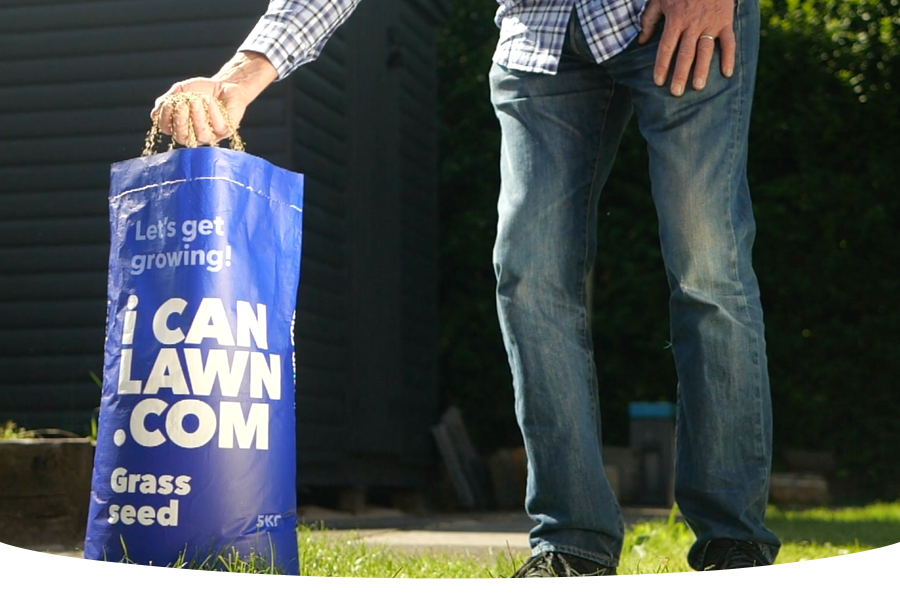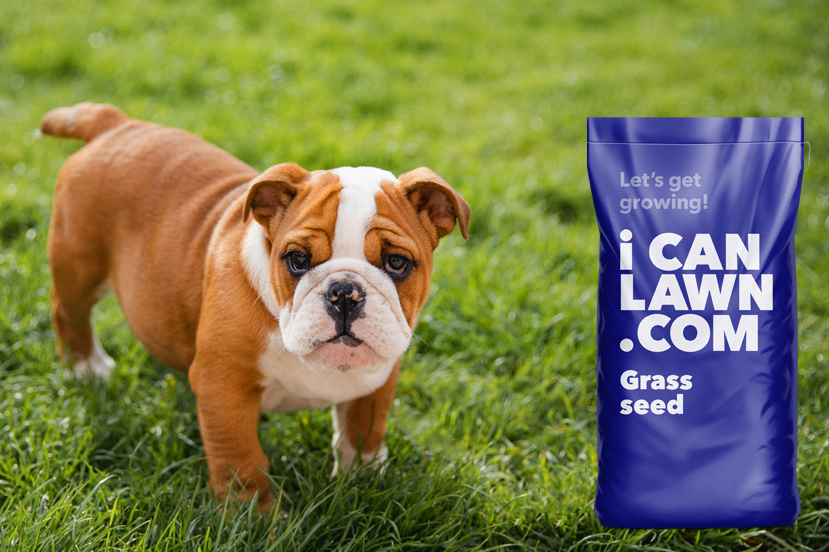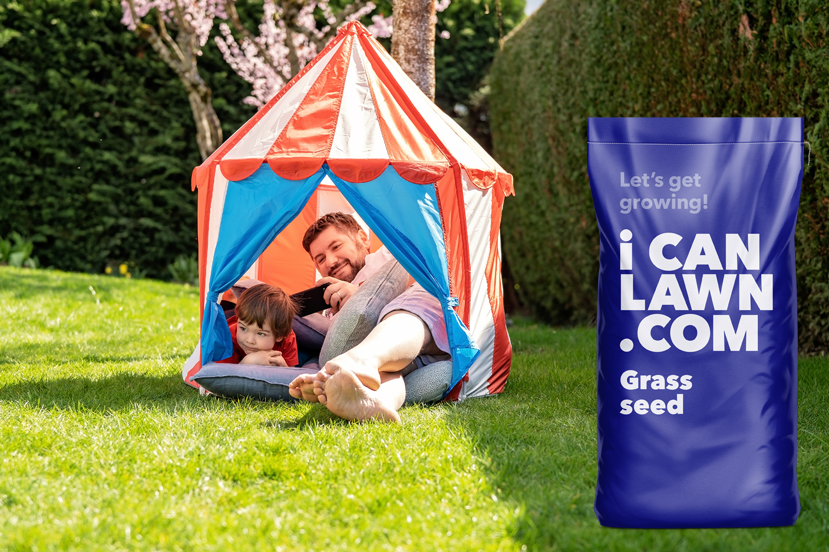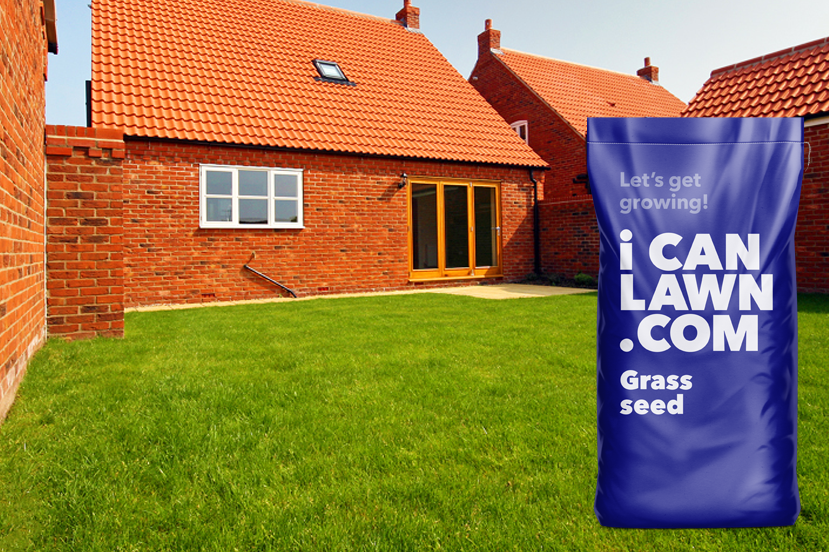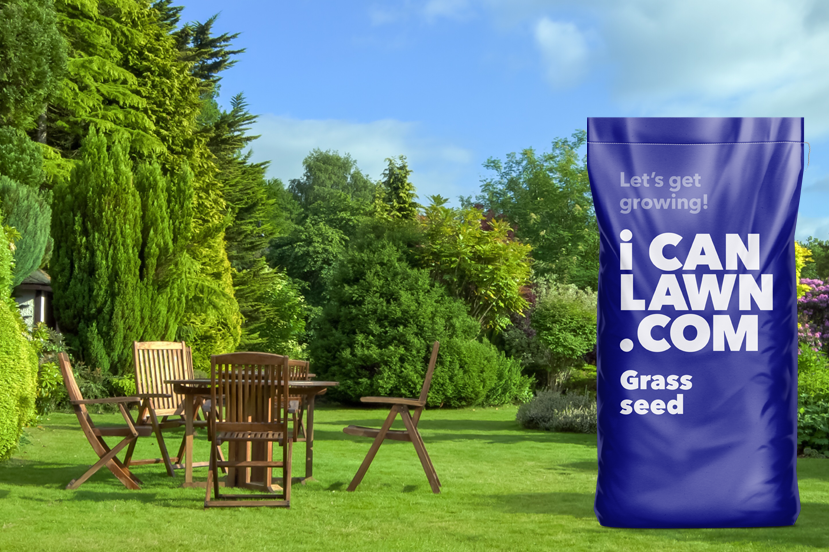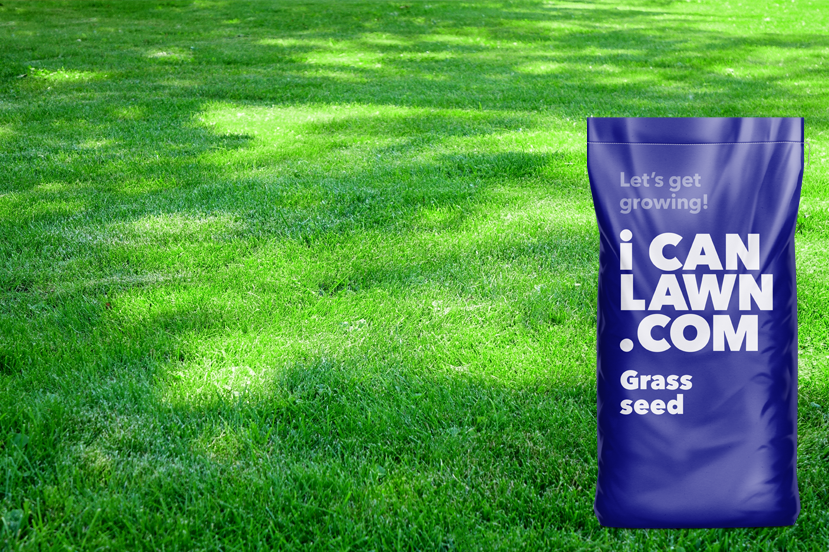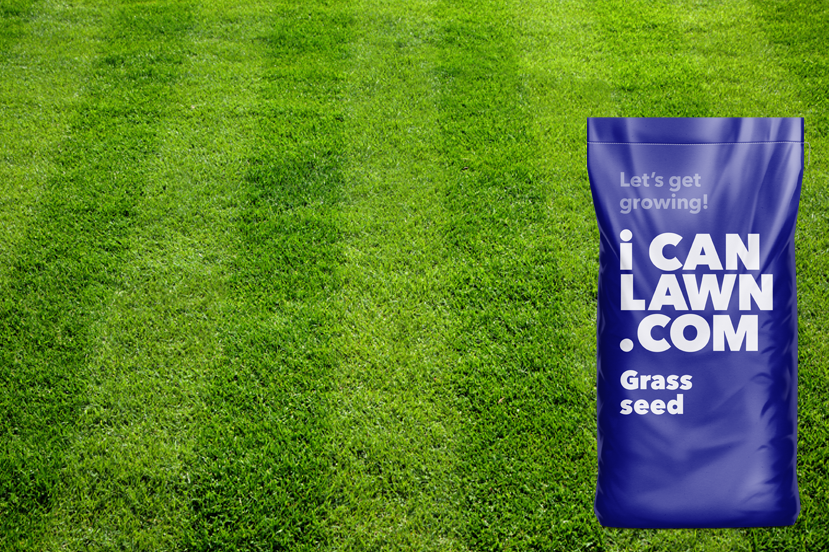When to put grass seed down UK

Make sure the conditions are right
It’s worth noting that the best times to plant grass seed are usually from mid-March until the end of autumn. But temperatures can change throughout the year; sometimes, warmer spells come sooner, and cold spells can arrive unannounced. So, start by checking your local weather forecast!
Check your local weather forecast
You’re looking for consistent temperatures of 10 °C and above for at least two weeks, day and night! If your forecast shows these numbers, you can be confident that your seeds will get the warmth they need to grow.
Then, check the monthly weather outlook to see if any weather warnings are predicted in the coming weeks – a cold snap or heatwave is not good for newly planted grass seed! Since grass seed takes around 6-8 weeks to establish and grow fully, checking this is an excellent way to determine if now is a good time to put grass seed down.
Be extra careful when sowing grass seed in early spring and November. Keep an eye out for cold weather fronts that can arrive suddenly because the sudden temperature change will immediately stop your seedlings from growing! If this happens, it will mean that you have wasted a lot of time and effort, and you will likely need to put more work in or, in the worst-case scenario, you will have to start again.
Here are some quick tips to help when putting grass seed down in the UK:
- Grass seed takes around 6-8 weeks to establish and grow
- You need to be seeing forecast temperatures of 10 °C and above for at least two weeks
- Avoid putting grass seed down in the UK during winter months, even if temperatures are looking good
- And keep an eye out for any cold snaps or heat waves, as these will hinder the growth of your grass seed
Pick the best grass seed for your garden
The type of grass seed you choose won’t necessarily affect how well it grows at any given time of the year (since all grass seeds require temperatures of 10 °C and above to grow). However, different seed mixes are better suited to different homes and this comes down to how their gardens are used. And this affects how well the grass grows and how good your garden lawn looks!
Different seeds for different needs
For example, our All Rounder Rapid Lawn is a durable and versatile seed mix that grows quickly and recovers from wear and tear. Our Fast Grow Family Lawn is great for a busy garden that sees a lot of footfall from the whole family and recovers quickly after it has been worn down. Likewise, our Tough Stuff Lush Lawn is a hard-wearing seed mix ideal for gardens that get lots of activity from your pet dogs as they wreak havoc over your lawn! Our Shade Supreme Lawn seed grows superbly in gardens surrounded by high fences and hedgerows that block sunlight.
Specialist grass seeds
We also have some specialist grass seeds, like our Super Fine Luxury lawn seed, for an ornamental lawn that resembles a bowling green for a pristine decorative finish. This seed mix is not intended for gardens that receive a lot of footfall. However, it is an excellent option for gardens with sandy soils. And our New Build Dream Lawn seed mix provides a luscious garden lawn over clay soils. It also grows fast, is hard-wearing, and is ideal if you have kids and pets.
Get your seedbed ready for putting grass seed down
Now you know the best conditions and have some insight into what seeds are ideal for your garden, you can prepare your soil for putting the grass seed down.
We have a helpful guide on preparing the perfect seedbed, but we have listed some key points below to get you started:
Getting rid of weeds and moss
Remove weeds and moss - you can remove weeds by hand or using a handheld spray weedkiller. Moss can easily be removed by regularly raking it out. However, be aware the moss may return if your lawn suffers from shade or frequent flooding! For larger affected areas, use our 3 IN 1 Lawn Rescue is the better option; this feeds your lawn while killing off weeds and moss.
We also have a detailed guide on how to get rid of weeds and moss.
Removing stones, rocks and debris
Get rid of all stones, rocks and debris – not only will this help when it comes to mowing, but it will also enhance the overall look of your lawn. You want to remove stones and rocks (some new-build properties can also have leftover building materials in the garden soil, too!) to ensure your grass grows as evenly as possible.
Afterwards, you want to break up the soil using a rake so that pulling a rake through the soil is easy. But, if there are any larger clumps, you can break them up using your garden fork or pat them down using a trowel. If you have a more extensive garden, you might consider hiring a rotovator to make the job easier.
Then, finally, the next step is to level your lawn to ensure your grass grows evenly. We also have a guide on how to level your lawn to perfection – and it’s pretty easy!
Planting grass seed and aftercare
Planting your grass seed is as straightforward as the other steps in this guide. And just like the other steps, it simply comes down to ensuring you have sorted the details and prep work:
- For a new lawn, you should put seed down at a rate of 50g per metre squared
- You can do this easily by hand, or you can use a seed spreader
- When putting the seed down by hand, measure a metre squared using bamboo canes or string.
- Measure out 50g of seed in a cup and return for more seed when needed.
- Scatter the seed from side-to-side widthways and lengthways to get good coverage.
- Your seed needs space to grow and shouldn’t be in a heaped pile.
- Using your rake again, rake the seed in so it is in amongst the soil.
- About three-pound coins stacked is deep and shallow enough to allow the seed access to the water, heat and sunlight it needs to grow.
- To ensure the seed is nicely embedded into the soil, walk across the seedbed with your feet, firming it in.
- You should then water your growing seedlings once a day, every day for the first six weeks after sowing – this is how long it will take for your lawn to be fully grown and be ready for its first mow.
- You can skip watering on days when it rains during the six weeks. Also, try to keep traffic off your lawn while it grows.
Stop birds stealing your grass seed
Keeping birds at bay is another thing to consider, as you don’t want them stealing your seed! To keep the birds at bay, you can cover the seed with a tarpaulin or net for the first few days after putting the grass seed down. Reflective items such as CDs or tinfoil strips can also help to deter them, or you can offer them an alternative food source, like some quality bird food, to draw them away.
Time for your first mow
Then around the 6-8 week mark, when your grass blades have reached around 5-7cm in height – your grass is ready for its first mow! For this first cut, set your lawn mower to its highest setting and then you should remember to mow it often and feed it with lawn food every season.




